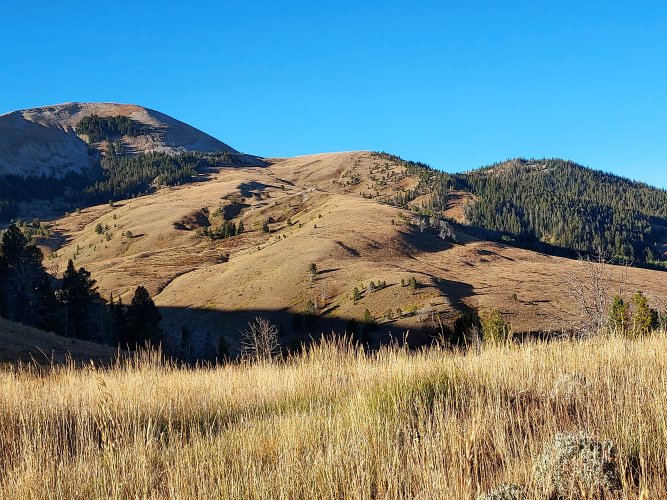BuzzH
Well-known member
This ranch in Blaine County Montana was, IMO/E of looking at range conditions across 10 States, probably the best managed ranch I've seen.I am no expert on grazing or range land. I am pretty widely traveled especially for my age. And I have yet be on land inhabited by cattle that that doenst show signs of over grazings. I will include Canadato lesser degree and Mexico to a greater degree.
Photos:
Wish I would have taken more pictures to illustrate better, but you can see there isn't much over grazing going on. In fact, I don't recall seeing any. Mix of state, BLM, and private.
Hunted it for many years and usually got distracted trying to figure out how they were managing and asking questions of the owners and hired hands. In a nutshell, what they were doing is just paying attention to details and kept the cattle moving around the uplands, simply mimicking bison. They put some thought into everything they did. I was talking to the owner one day and he showed me a culvert he put in because he happened to see a small brook trout washed up on the bank when he crossed the creek with his truck before he put the culvert in. I didn't think much about it at the time. Later I got to thinking, if a guy is going to buy a culvert, haul it out in the middle of nowhere, for a brook trout...pretty doubtful he's going to let his cattle trash the place. They managed for the benefit of everything and tried to keep the land whole, was pretty awesome. What a wonderful place to visit and hunt. They had it figured out and dialed as well as any ranching operation I've ever seen. It takes commitment and work, but its possible. Oh, and seeing a few hundred mule deer, 50+ bucks, a few hundred pronghorn, and some monster bull elk everyday was the norm. Along with about every other kind of wildlife that's found in that country. Also interesting, that ranch prohibited shooting coyotes.






